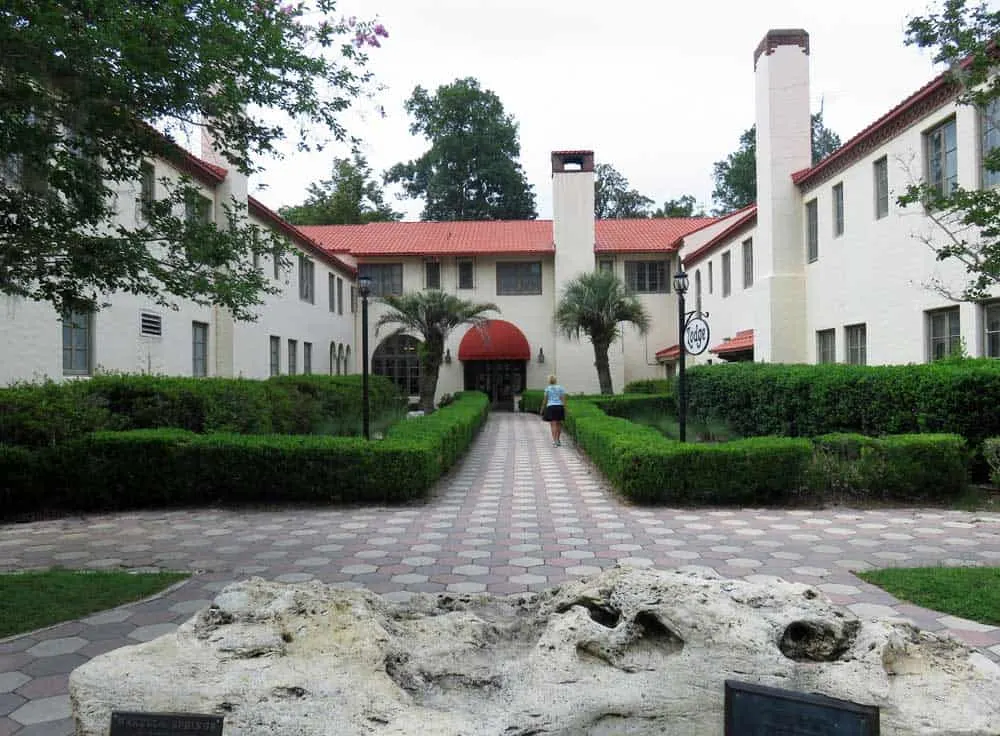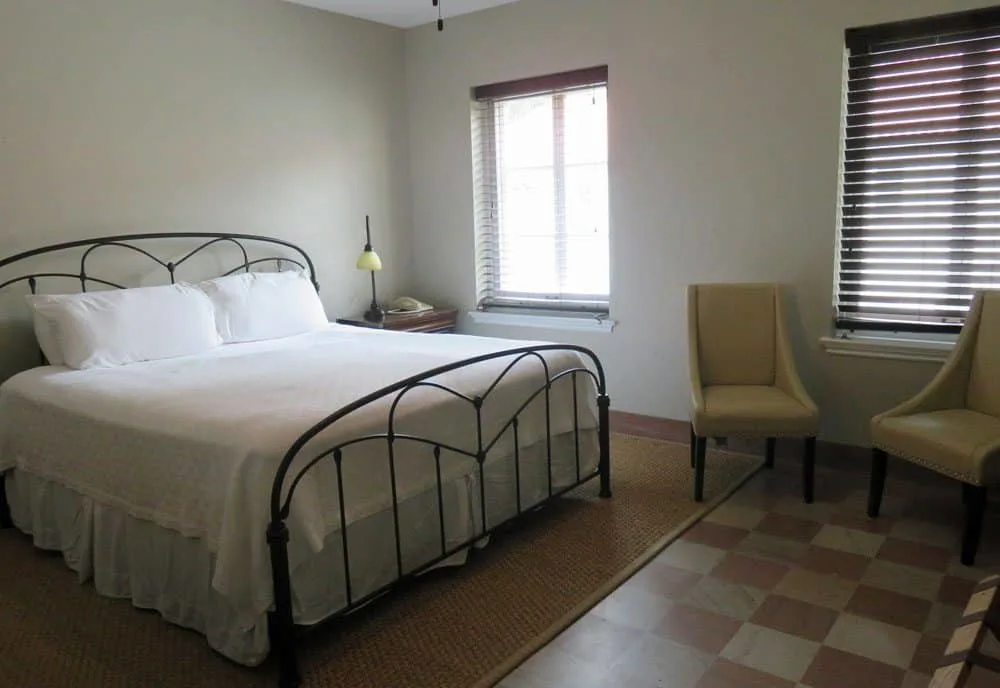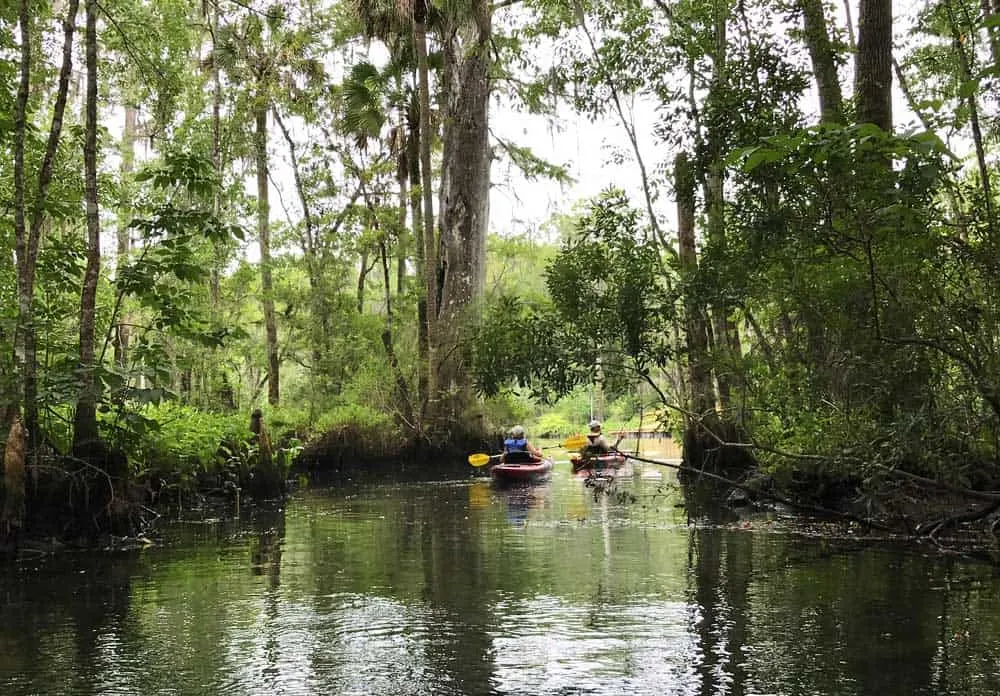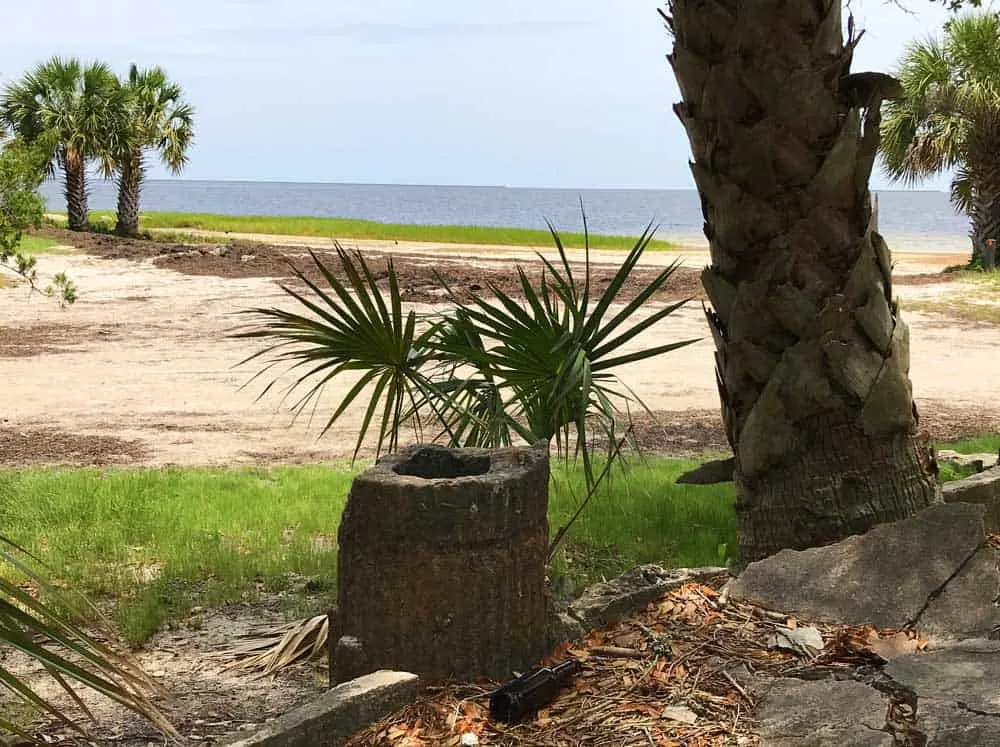Right where Florida curves around in its Big Bend under Tallahassee, you’ll find Wakulla Springs State Park, a great place to explore if you like natural beauty and Old Florida ambiance.
There are only 30,000 residents in Wakulla County and no cities. But within an hour’s drive, you can kayak one of Florida’s most beautiful rivers, swim in one of its biggest springs, bicycle one of its best bike trails and stay in an atmospheric grand lodge or at a classic fish camp.
You can admire a lighthouse, hike trails in a vast wildlife refuge and explore places where fascinating Florida history happened — all in the Wakulla Springs State Parks and St. Marks, Florida, area.
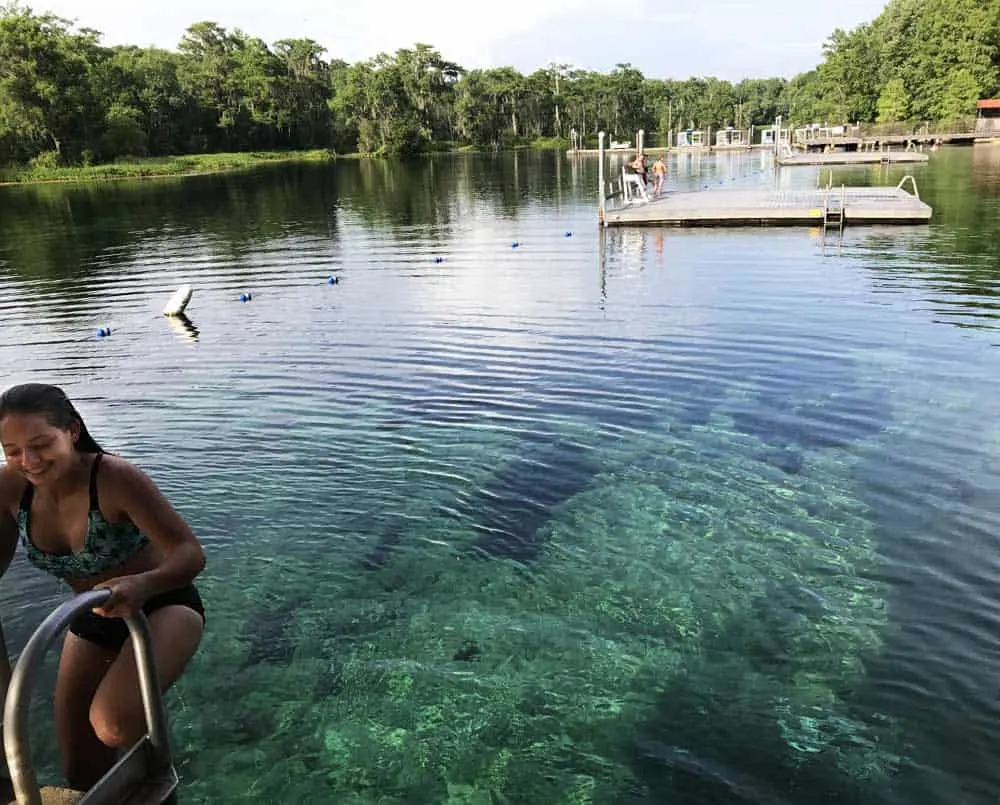
Because it lacks good beaches, many drive through this region on their way to the perfect sands of the Panhandle, and, perhaps as a result, there aren’t many hotels or campgrounds.
But if you stay at Wakulla Springs State Park and its historic Wakulla Springs Lodge, you’ll discover there’s so much outdoor recreation and history to enjoy. And it’s all unspoiled and authentic.
Wakulla Springs State Park and Wakulla Springs Lodge
Just 15 minutes south of Tallahassee, Wakulla Springs State Park feels like a well-preserved heirloom.
Made famous by Tarzan films and the place where the Creature from the Black Lagoon calls home, this first magnitude spring has a big spring-fed swimming beach, a tall tower from which daredevil youth dive into the deep clear spring, a boat tour, trails and many places to explore nearby.
We stayed in the Wakulla Springs Lodge two decades ago and were thrilled to return and see about the only thing that has changed since then is it now has wifi.
The Wakulla Springs Lodge isn’t quite as grand, but it reminds me of the historic lodges built in the national parks.
It dates to 1935 when a famous Floridian, businessman Ed Ball, had it built as a private lodge. (The park is officially named Ed Ball Wakulla Springs State Park.)
The elegant but rustic Wakulla Springs Lodge was built in the Mediterranean Revival style and its most special feature is a spectacular painted beamed ceiling, recently restored, in its huge lobby. There’s a beautiful dining room and an old fashioned marble soda fountain counter in the snack shop that is said to be the longest marble counter in the country. (Where do they get these records?) It all overlooks the first magnitude Wakulla Springs.
The guest rooms are spacious for hotel rooms of that era, each with its own vintage marble bathroom. The rooms are all on the second floor, reachable by an antique elevator that we recommend you try out. (It functions in an unexpected way, but we’ll let you discover it.)
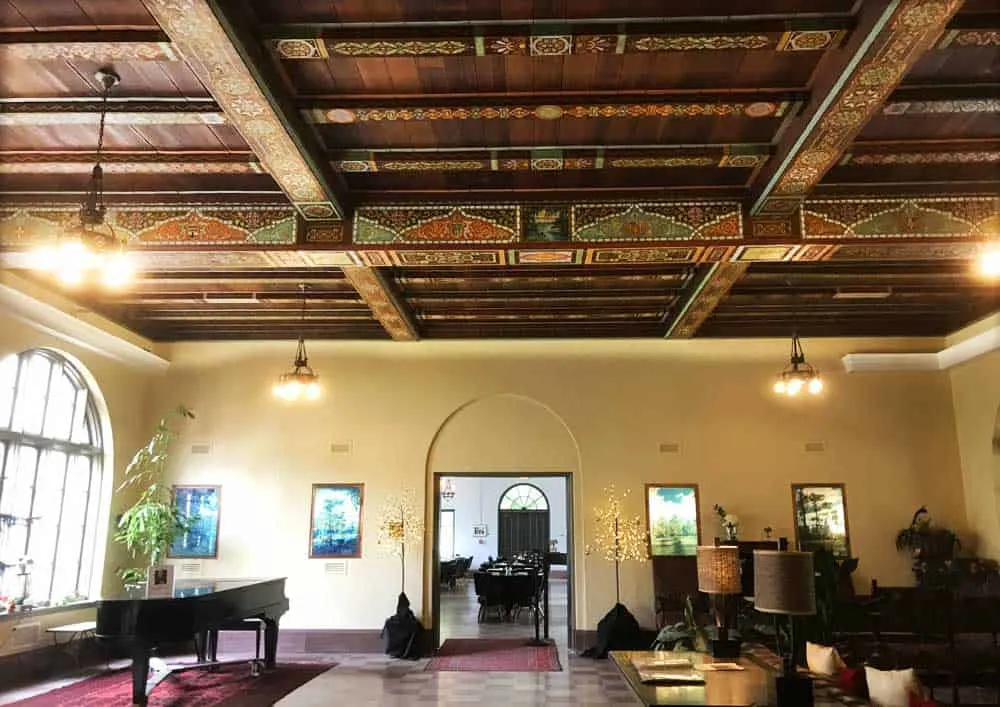
The Wakulla Springs Lodge dining room is lovely and we liked the reasonably priced food and service. A hearty breakfast is included in the room price. We loved the fried chicken and Jessie Ball DuPont salad (blue cheese, candied pecans and green apples over greens)
Rambler Tip: If you don’t book a room at the lodge, you can experience the place by having a meal in the dining room.
The beauty of staying in Wakulla Springs Lodge, though, is that you can awaken early and take a morning hike in the woods or just gaze out at the spring before swimmers arrive. A beautiful trail leaves from the lodge parking lot and takes you to a little spring-fed stream in one direction or a splendid cypress hammock in the other.
The spring itself has clear water in a natural setting, with cypress trees and vegetation surrounding the spring head and wading birds fishing nearby. Years ago, several mastodon bones were found in the spring. (You can see some preserved in the lobby.)
The water temperature is a chilly 70 degrees year round, but in the summer that is perfect for 90 degree days. Just wading in Wakulla Springs cools you off.
There is a 22-foot diving platform and, if you watch for a while, you will see that the kids – and it is almost all kids – spend a lot of time standing there building up courage to jump into the cold water.
Even if you’re not going to jump in, do climb up to the top of the diving tower because here you can look down into Wakulla Springs. From here, the view of the spring, with its depth and clarity, and the river it forms, is the best. Just be careful with your electronics when kids cannonball into the water!
Like a lot of springs, however, it is not all that healthy today. Algae and vegetation have turned much of the springhead green instead of its former white-sand bottom. It no longer has the kind of visibility where you could peer through 70 feet of water. (Alas, the park used to operate glass bottom boat tours but, the water is seldom clear enough to warrant that now.)
The park still offers boat tours, though usually not glass-bottom, and, at $8 for adults, they’re one of the best bargains in Florida. The boats are covered and accessible to people in wheelchairs. The ranger-led tours are 45 minutes long and cover a two-mile loop. Wildlife, from alligators, to wading birds to manatees, is often seen.
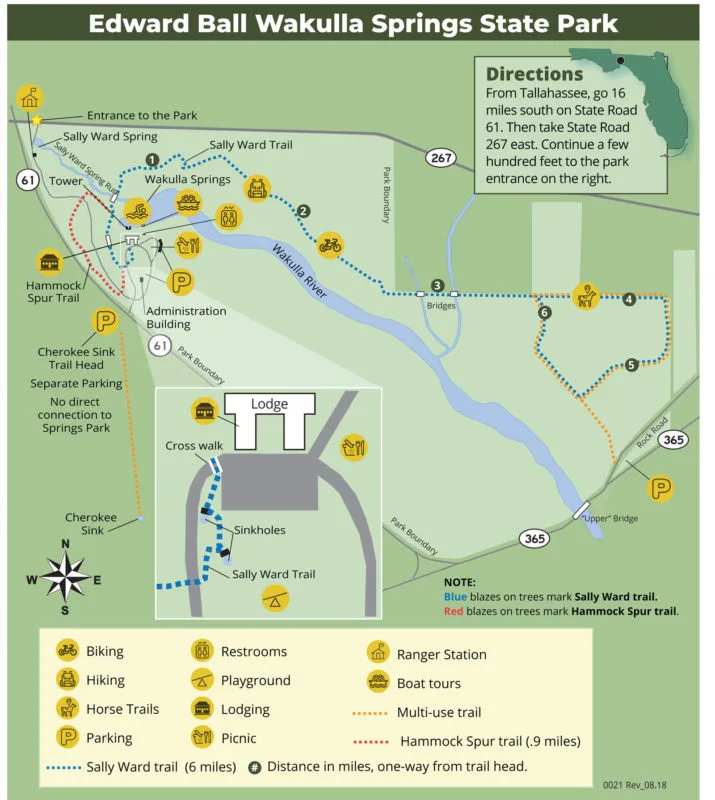
Kayaking the Wakulla River near Wakulla Springs State Park
About four miles outside Wakulla Springs State Park you can rent kayaks to paddle on the river. The outfitter, T-n-T Hideaway, is a family business in its fourth generation. It is located on the Wakulla River a few miles downstream from the springhead.
Kayakers can start here, paddle up to the boundary of Wakulla Springs State Park (no private boats are allowed inside the park) and then return. You can launch your own kayak at T-N-T for a $5 fee.
We signed up for a tour that made our trip one way downstream. Our kayaks were delivered to the Wakulla Springs State Park boundary and we paddled leisurely downstream with the flow back to the outfitters.
It is gorgeous scenery, with ancient cypress trees lining the banks and occasionally emerging from the water to form little islands.
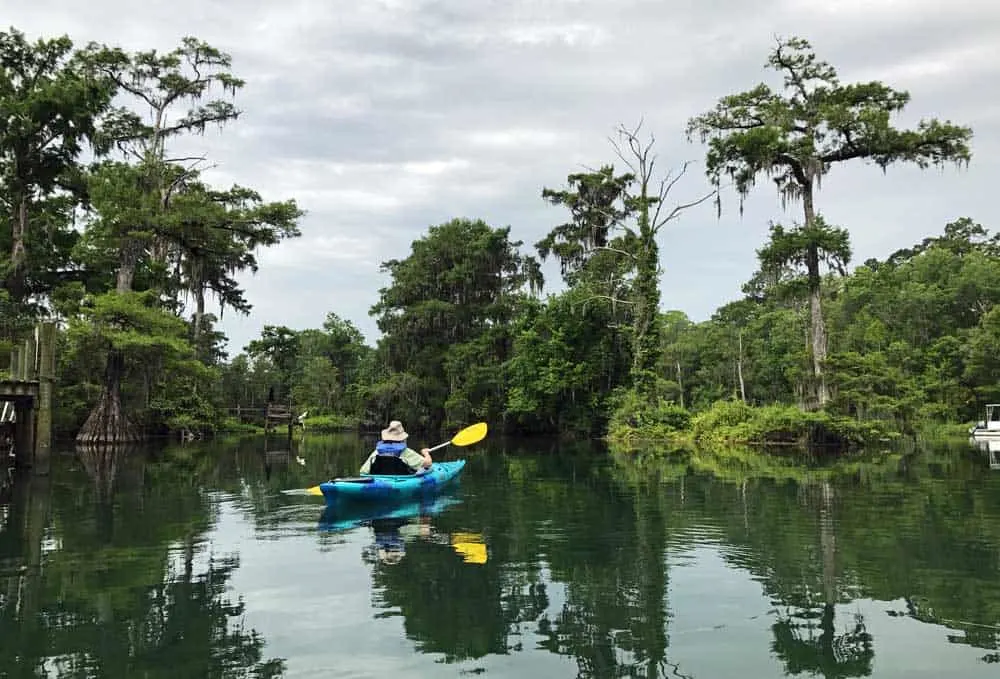
We saw several small gators and a few birds, including an osprey nest with everyone home — mom, dad and chick. On our late May morning, the banks were lined with wild flowers.
One of the most appealing spots along the river was a little sulfur spring in its own small cove beside the river.
Note: While we had a leisurely paddle downstream, the current is not so strong that you would have trouble paddling upstream and back.
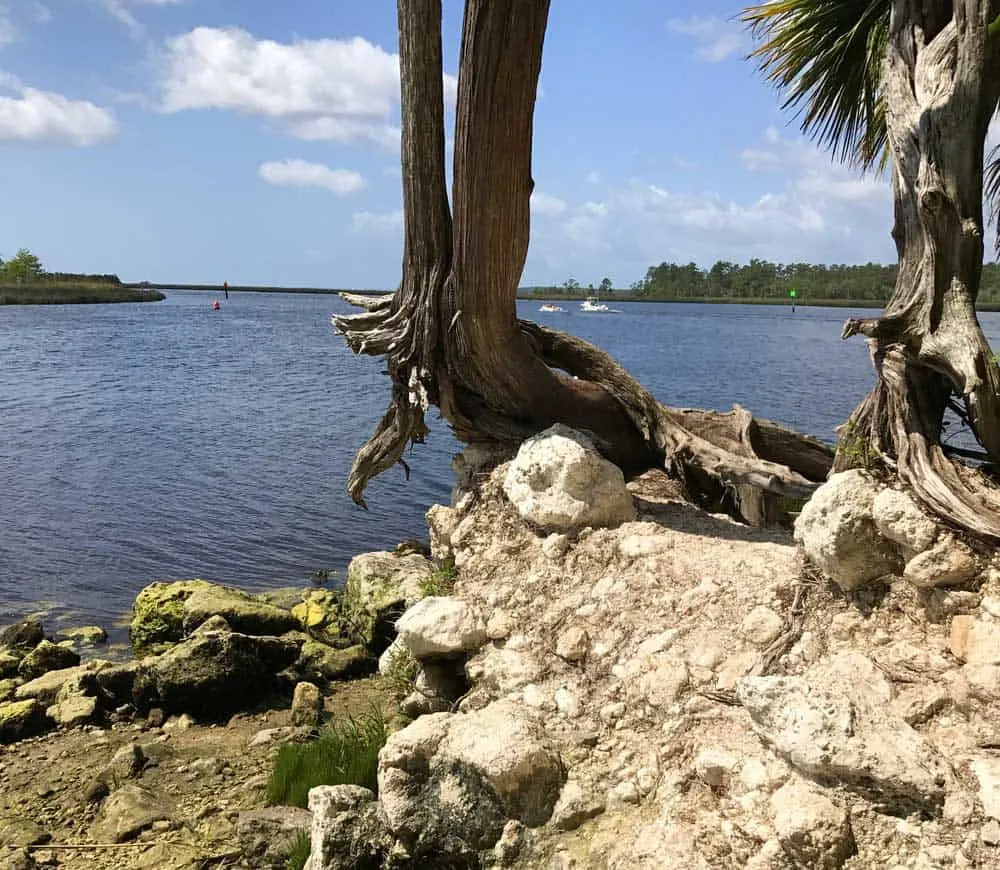
Near Wakulla Springs State Park: The little town of St. Marks, Florida
Just 20 minutes away, St. Marks, Florida, is a historic town, located where the Wakulla River meets the St. Marks River, eight miles from Wakulla Springs State Park.
There’s not much to it — two restaurants, a tattoo parlor, a market and a post office. It’s the end of the Tallahassee-St. Marks Historic Railroad State Trail, a terrific bike trail we detail below, and it’s adjacent to the St. Marks National Wildlife Refuge, which also deserves exploration.
But little St. Marks, Florida, has one of the longest histories of anyplace in Florida, and the state park located here, San Marcos de Apalache Historic State Park, tells the story.
This historic fort, first built by the Spanish, changed hands among a half dozen nations so often you’ll have a hard time keeping it straight.
But you don’t have to study the history or visit the museum to enjoy visiting here.
A small trail circles the museum and takes you out to the beautiful spot where the Wakulla River joins the St. Marks River. An admission fee is not required to enjoy the grounds.
The fort’s history includes its role during the Civil War, when it was Fort Ward.
If you’re a history buff, you’ll want to pay $2 to enter the museum, where an 18-minute video gives a great overview of the many peoples and leaders who lived and died here. And talk about dying — this was a very miserable place to be for most of its history.
Today the site shares space with a busy boat ramp and there is a beautiful view of boats coming and going on the rivers from several points in this park.
Sadly, one of my favorite places in St. Marks, is closed — Bo Lynn’s Grocery Market, a classic general store that had been in continuous operation since the 1930s and is on the National Register of Historic Places, closed when its long-time owner Miss Joy Brown died in early 2021. As of summer 2022, the building was for sale.
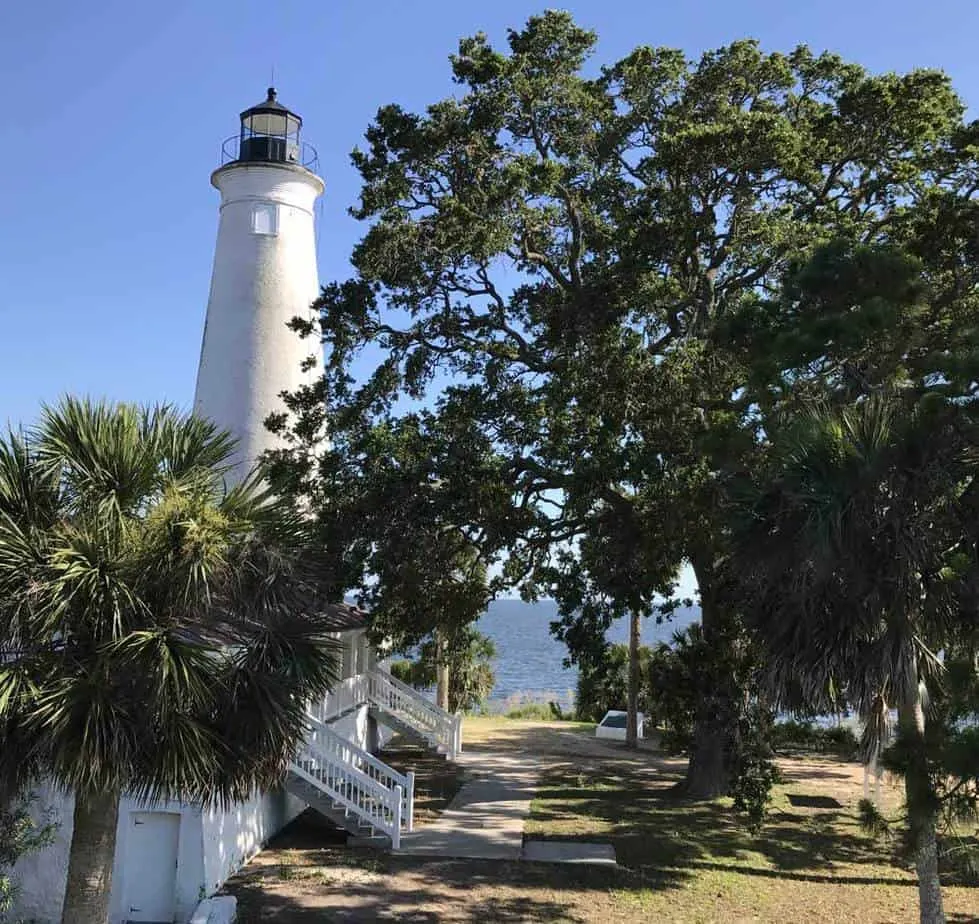
Near Wakulla Springs State Park: St. Marks National Wildlife Refuge
The entrance to St. Marks National Wildlife Refuge is about 15 miles off US 98 and about a half hour from the town of St. Marks, Florida. It’s worth exploring, if only to enjoy the scenic road to the historic lighthouse and the view of Apalachee Bay.
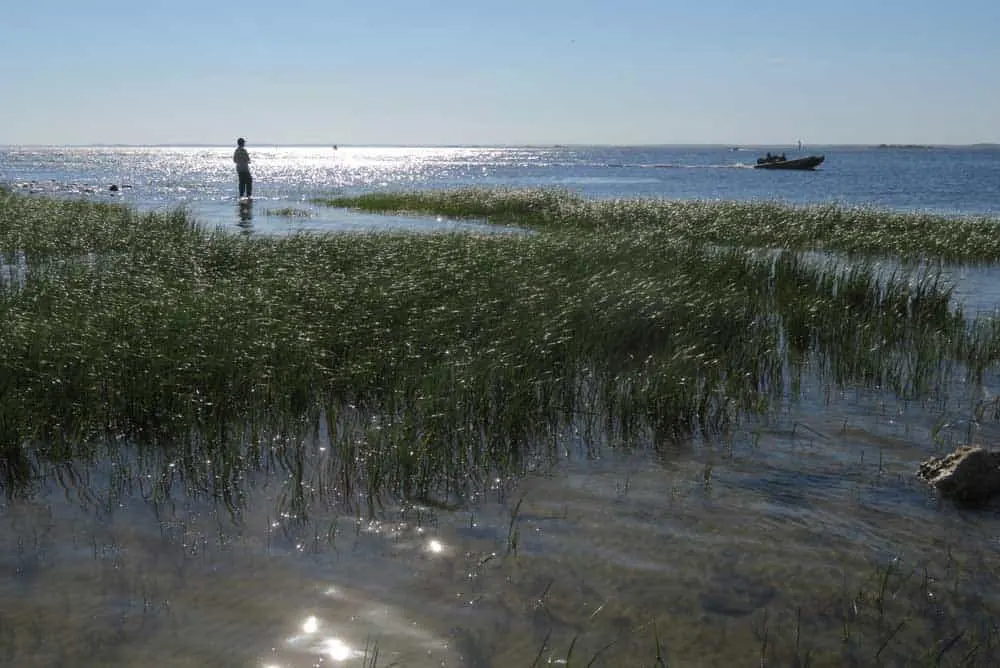
Your first stop should be the wildlife refuge headquarters, whose deck overlooks a pretty lily-pad-filled pond. There’s a pleasant one-third-mile boardwalk trail through the forest too. At the headquarters, you can pick up maps to guide you on extensive hiking and fat-tire biking trails. St. Marks is a top birding site in the winter and, in fall, thousands of monarch butterflies stop here on their migration.
Beyond the headquarters, the road to the 1831 lighthouse passes extensive wetlands where you’ll see fishermen trying their luck, and there are plenty of places to stop and enjoy the views. The road ends at the scenic St. Marks lighthouse, where you can walk along the half-mile-long Lighthouse Levee Trail admiring the grassy coastline.
Read more details about visiting St. Marks National Wildlife Refuge in this Florida Rambler guide.
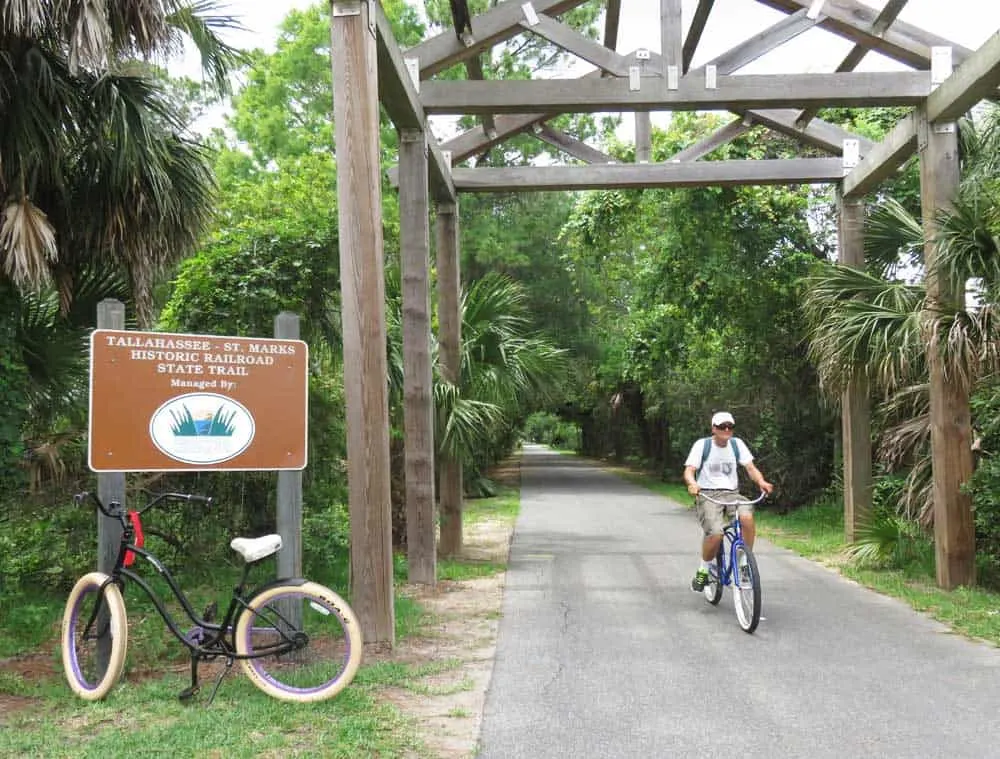
Bicycling the Tallahassee-St. Marks Historic Railroad State Trail
This 16-mile bike trail was Florida’s first rail-to-trail, developed in 1988, and it preserves an especially historic corridor. The railroad itself was built in 1831 when mules pulled wagons on rails on this route. Accounts tell of a rough journey through a wild area, but it was the best way for cotton from Florida and Georgia plantations to reach docks where it could be boarded on ships to England and New England.
Today’s bicyclists will find a 12-foot-wide smooth and shady asphalt trail from Tallahassee to the little village of St. Marks, Florida.
We rode the southern section, which was entirely through shaded woods with just a few busy roads to cross. This trail has all the amenities – restrooms every few miles, benches, and at least one shaded picnic table.
The trail is very close to Wakulla Springs State Park and so there are good opportunities for wildlife sightings. For us that consisted of a small box turtle and a brightly colored rat snake.
As of summer 2022, there are no bike rentals near this trail that we are aware of. (Leave info in the comments if you know of a place.)
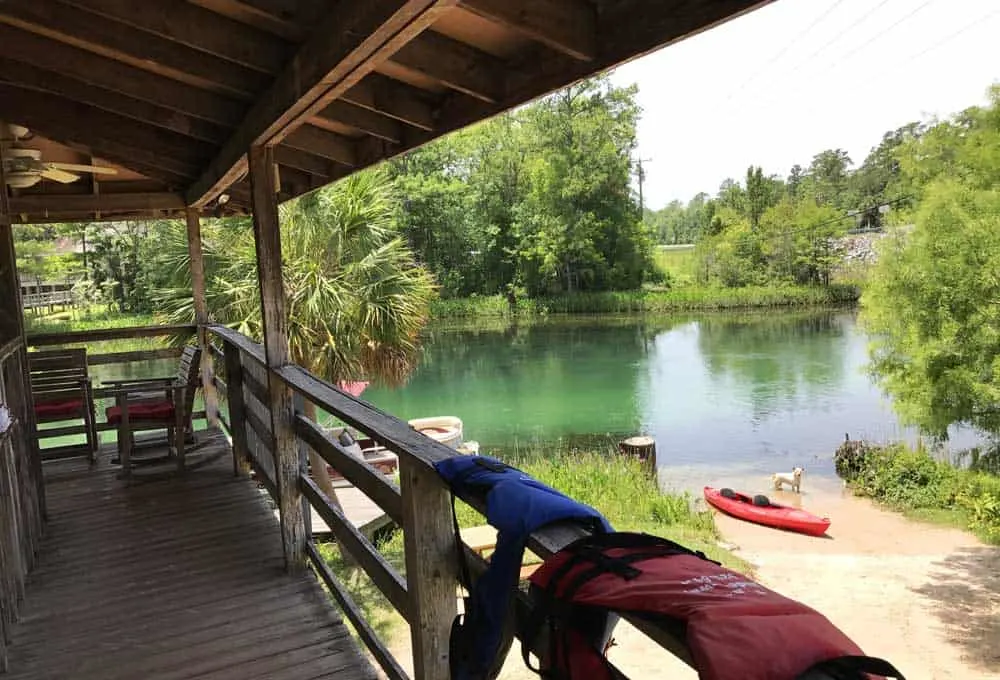
Near Wakulla Springs: Natural Bridge Battlefield State Park
This quiet scenic spot along the Saint Marks River is interesting for its geology: the St. Marks disappears into a sinkhole cavern and travels underground and reemerges as the spring.
If you are a Civil War buff, it’s an interesting stop because it is one of the few Civil War battles fought in Florida. It wasn’t a particularly famous or important battle, but the Confederacy was proud to claim they won it. The Union disputed this. The Confederacy claimed the victory because the Union never took Tallahassee, the only Confederate capital east of the Mississippi that was not captured. The Union said: “Hey we didn’t want Tallahassee.“
There’s not much to see here besides a beautiful section of riverfront end and trees, but it makes a nice destination for wandering the countryside.
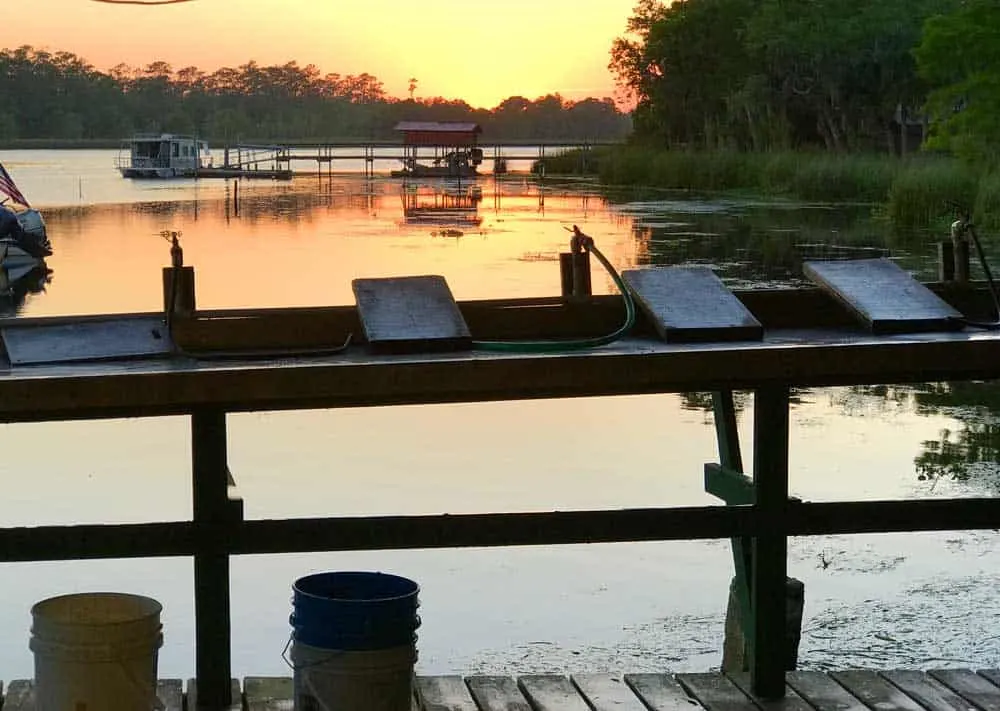
Hotels and camping in Wakulla Springs State Park and St. Marks
There aren’t many hotels or campgrounds near here.
We stayed at the Lodge at Wakulla Springs, described above, and Shell Island Fish Camp, located a mile from St. Marks “downtown.” The fish camp offers clean, basic motel rooms, two kinds of cabins plus campsites for RVs or tents. It’s located on the Wakulla River in a busy fishing marina. We enjoyed watching the fishermen cleaning their catch and overhearing their stories. The place is friendly and inexpensive.
There is no camping at Wakulla Springs State Park. Camping is available at nearby county-run Newport Park and a bit further away at Ochlockonee State Park. On the water south of Panacea, you’ll find Holiday Campground.
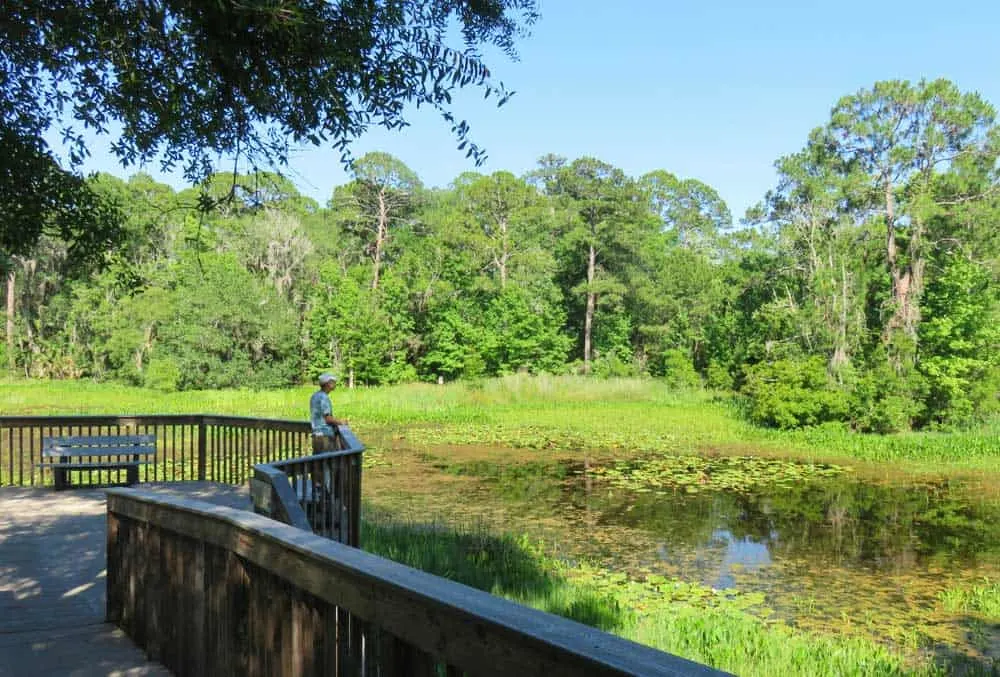
Resources for a Wakulla Springs State Park trip
Ed Ball Wakulla Springs State Park official site
The Lodge at Wakulla Springs Rooms range from $129 to $174 for two and include a hot breakfast from a menu served in the dining room.
St. Marks National Wildlife Refuge (Florida Rambler guide); St. Marks NWR (official site)
T-n-T Hideaway (kayak rentals)
Tallahassee-St. Marks Historic Railroad State Trail
Natural Bridge Battlefield State Park
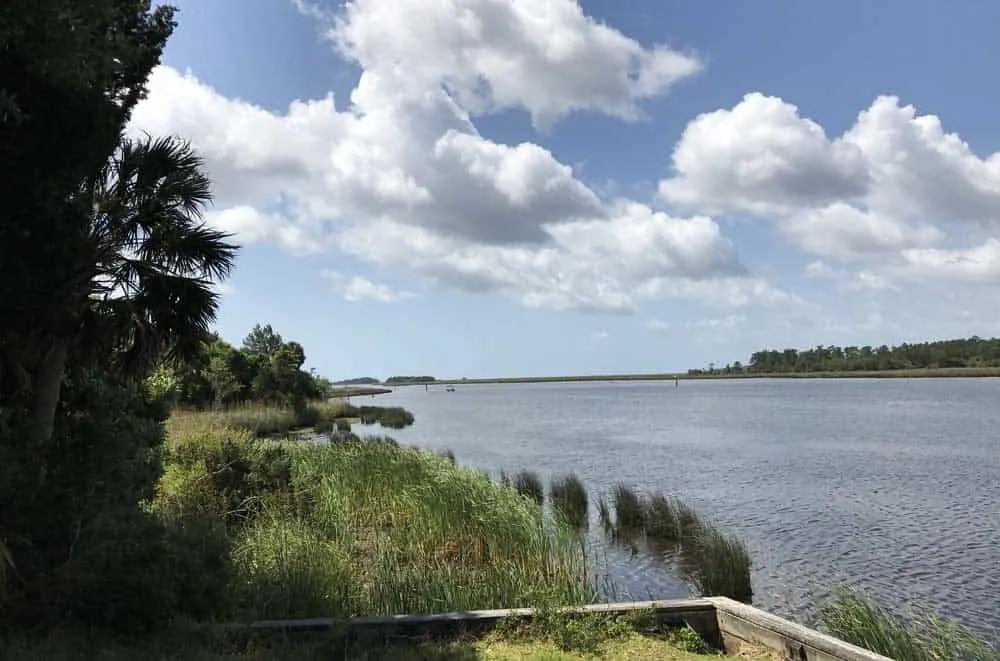
Updated 8/2019
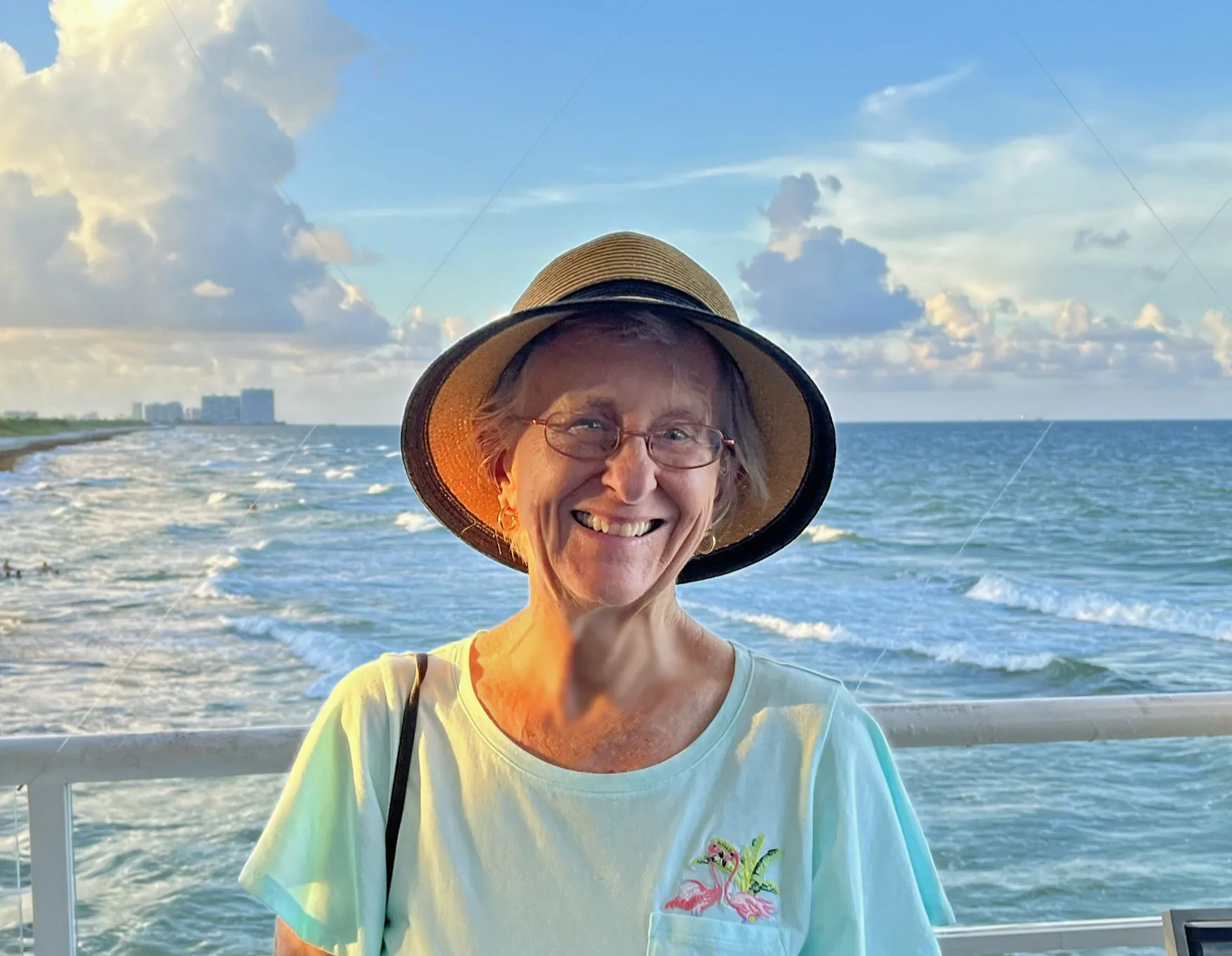
The author, Bonnie Gross, travels with her husband David Blasco, discovering off-the-beaten path places to hike, kayak, bike, swim and explore. Florida Rambler was founded in 2010 by Bonnie and fellow journalist Bob Rountree, two long-time Florida residents who have spent decades exploring the Florida outdoors. Their articles have been published in the Sun Sentinel, the Miami Herald, the Orlando Sentinel, The Guardian and Visit Florida.

